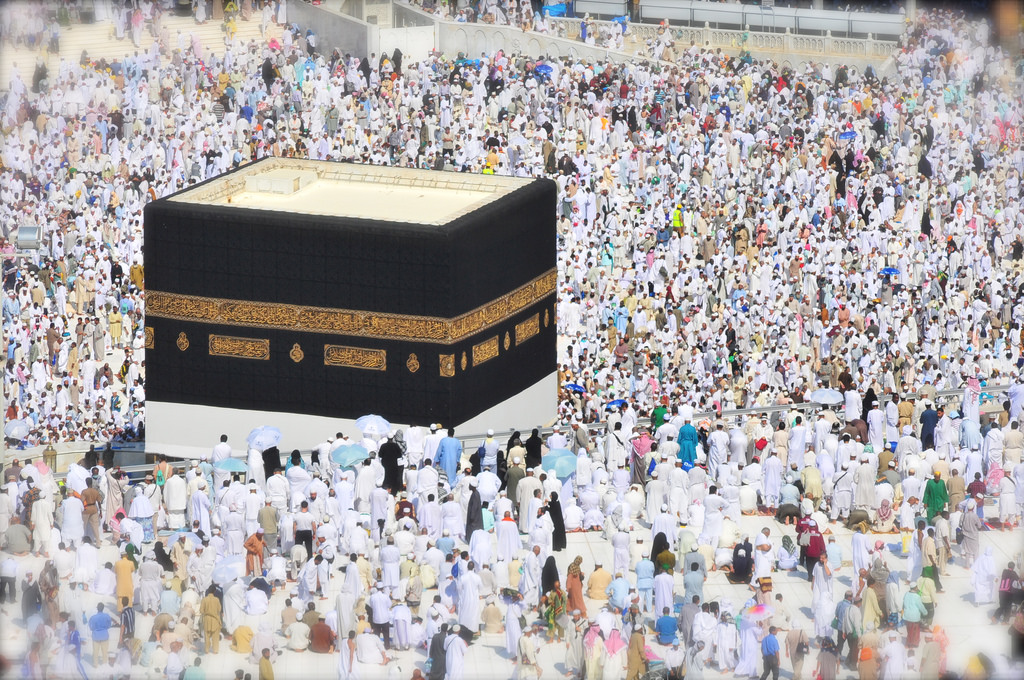In the glitzy, dusty desert city of Mecca today, 3 million people are embracing each other with joy, relief and incredulity. Joy that they’ve completed the exhausting Hajj rituals — a pilgrimage incumbent on every physically and financially able Muslim once in their lifetime, relief that a towering construction crane or stampede didn’t crush them to death in the process, and incredulity that they actually managed to complete it, despite the massive crowds and 110-degree heat.
How do I know this? Because I was one of those pilgrims last year, fortune enough to have survived and tell the tale. The 2015 Hajj season was the deadliest in history. First, a construction crane collapsed on 11 September, killing more than 100 people who had gathered to pray in the Grand Mosque of Mecca, Islam’s holiest place of worship.
Just over a week later, a stampede broke out on a street that I had been walking on hours before. Almost 3,000 people were crushed to death. Horrifying cellphone footage surfaced in the days after, showing screaming pilgrims desperately climbing on top of each other to reach a nearby wall for safety. Try posting that experience on Facebook.
If you’ve ever wondered what it’s like to complete the Hajj in modern Mecca — or even if you’ve never given it a second thought – read on, if not for anything but to gain a better appreciation of what those 2,278 souls witnessed before their lives abruptly ended on this week last year — and why so many people flocked to Mecca again this year, despite the risks.
Among other things, Hajj can be seen as a symbolic barometer of the global Muslim community, an ultimate measure of one’s patience and tolerance for one another among extraordinarily testing circumstances.
Like Christians, Muslims are far from being a monolith. There are about 50 countries in the world today with a majority Muslim population, each having its own distinct culture, or multiplicity of cultures. The pilgrimage to Mecca poses a unique opportunity for Muslims from diverse backgrounds to unite as one.
Absence of labels
The absence of labels feels refreshing. In Mecca, Muslims are not categorized along “moderate”, “conservative” or “extremist” lines, nor along ethnicity or sect. The ultra-Orthodox Saudi cleric will silently worship shoulder-to-shoulder with the impassioned Iranian; the billionaire businessman from Dubai will trudge through the same stifling heat as the farmer from Uzbekistan as they complete Hajj rituals.
Perhaps most shocking: men and women pray and carry out rituals side-by-side, a practice permitted only at the Grand Mosque, where the Kaaba situated, the black-cubed structure that pilgrims are required to circumambulate.
Whether you’re a devout believer or not, it’s awe inspiring to witness some of the scenes before you during the Hajj: the adult sons that carefully push their elderly mothers in wheelchairs and negotiate with the Saudi guards to give them space to pray; the little Pakistani boy adorned in ihram excitedly pushing his wheelchair-bound father who is holding another son — a baby no more than six months — in his lap; the six-foot-tall African man who rushes to help up the Iranian woman who has tripped during her tawaf (circumambulation of the Kaaba); the Algerian teenager from France who has cheerfully accompanied her grandparents on the pilgrimage (adding that she relies heavily on Snapchat for survival); the skinny grey cats that weave in and out of prayer rows in the marble courtyards, and the dozens and dozens of tiny birds that mimic the smooth circumambulation of pilgrims — albeit in the opposite direction.
None of this of course means that all pilgrims do take their unifying, life-altering experiences from Hajj and return back to their normal lives free of prejudices and moral transgressions. Nor does it mean that Mecca is a utopia for social justice — far from it. Flashy shopping malls and skyscrapers overlooking the Kaaba have all been built over precious cultural and historical sites, wiping out the city’s aesthetic and cultural character.
Iranians were not permitted by their own government to attend Hajj this year because of a breakdown in political ties with Riyadh, and I lost count last year of all the times I had aggressive Saudi security guards try to prevent me and other women from praying next to men in the Grand Mosque.
It’s deeply frustrating to see how sectarianism, extremism and misogyny have permeated Muslim countries worldwide, and Saudi Arabia is guiltier than most on all three counts.
But it’s also worth recalling that the true beauty of the Hajj does not lie in the city of Mecca, but in the tenacity and graciousness of its pilgrims, many of whom have used their entire life’s savings to indulge in this 1400-year-old tradition. There’s good reason why every pilgrim is required to write a will and clear their debts before departing for the journey.
And if you’re lucky enough to return home, you’ll have some brilliant stories to tell your kids.
This article originally appeared in the Middle East Eye.
Like this article? rabble is reader-supported journalism. Chip in to keep stories like these coming.
Image: Flickr/Al Jazeera English



